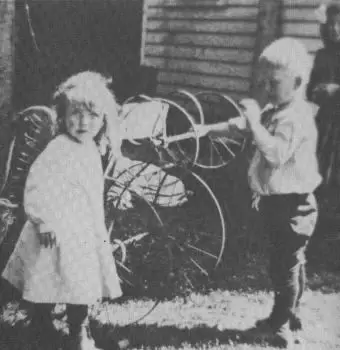Pioneer Children

Today’s kids can have a lot of fun while playing and learning. This was not the case with pioneer children, as many of them had to work doing a lot of chores, and only some received an education. While today you have electronic games, television, and streaming to entertain, pioneer kids had the very simplest of games and toys to play with, but they used their imagination for fun.
- Most of the early pioneer children lived on farms, and the families depended on them to help with the work, including planting, harvesting, and even tilling the soil. They were often responsible for the animals on the farm and were up very early in the morning to milk the cows, feed the chickens, and tend to the pigs. The girls helped with the sewing, cleaning, getting the eggs, and took care of the youngest kids. Boys were out in the fields harvesting and planting and could be seen caring for the oxen or horses. Both boys and girls would help to gather firewood or “buffalo chips” (dried cow or buffalo dung) for the stove fuel.
- If the pioneers had developed a community, it was rare that they had a school. Sometimes, they would build a one-room schoolhouse, but only a few kids were given any kind of instruction because teachers were a rarity. If they were a community lucky enough to have a school, classes were usually led by a “monitor” who was an older child that got lessons from one of the few teachers in the area and then brought the lessons back to teach the other kids. School only lasted from May through September or October so that the children could be available to help with the farming duties. There were typically only eight grades available for the children, and everyone was taught in a single room.
- Pioneer families often had extensive families with the children helping on the farms. Many kids and parents died of accident or disease. The kids might have one set of clothes for daily use and a special set of clothes for Sunday. The toys they had were homemade and could include a doll, carved animals, or a ball. They did play a lot of games outside, including hiding and seek, jump rope, and games of imagination. They used tree vines to make their jump ropes.
- Beds were sometimes made of animal skins placed on the floor or mattresses that were filled with corn cobs, feathers, or cattails. Since there was little extra space, most children shared their beds with one or more of their siblings. The most common method of transportation for kids was walking, and this meant that their shoes would wear out. If they didn’t have extra pairs of shoes, they would walk barefoot.
- Family meals were very simple and included everything that they grew on the farm or the result of hunting or fishing. Fresh vegetables and fruits were common in the summer, and they used that time to “put up” or can extra beans, onions, and apples for the winter months. They ate a lot of porridge and cornbread, and some would make maple syrup.
- Pioneer children lived in a constant state of danger from diseases and accidents. They didn’t have hospitals, doctors, and medicines like we have today, and a cut could quickly turn into an infection that could kill them.
Q&A:
What were some of the chores that kids were responsible for during the pioneer days?
Planting, harvesting, caring for the animals, getting eggs, sewing, cleaning, caring for younger kids, collecting wood
What was the name of the older students that played the part of the teacher in one-room schoolhouses?
Monitor
What happened when a child wore out his or her shoes?
They walked barefoot
What did the kids make their jump ropes out of?
Tree vines
Why did a school season only lasts from May through September or October?
So the kids could help with the planting and harvesting on the farm>
How many grade levels existed in the one-room schoolhouses during the pioneer days?
Eight



